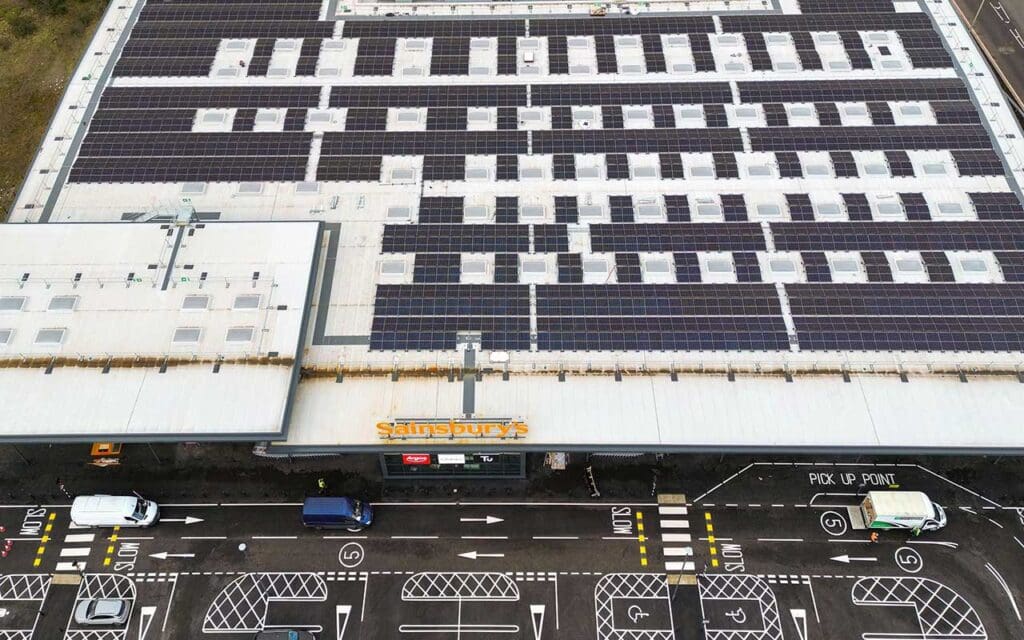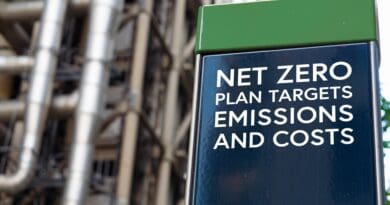How can businesses best walk the green walk?

More and more businesses are implementing ESG policies, publishing regular updates on their green activity, and seeking to reassure customers and stakeholders alike that being sustainable is a high priority, and in many cases, this is being driven by a genuine desire to contribute to efforts to save the environment.
However, against the backdrop of increasing environmental consciousness amongst consumers, other commercial factors are at play. According to Deloitte’s most recent consumer sentiment research, a quarter of consumers are prepared to pay more for products and services that are sustainable, so it is little wonder that businesses are increasingly conscious of embedding sustainability into their operations.
But when it comes to sustainable practices, it could be argued that doing is only half the battle. Deloitte’s research also finds that 34% of consumers would have greater trust in brands if they were recognised as a sustainable provider by a third party. Clearly, the old adage ‘show, don’t tell’ is a vital part of a successful pivot to sustainability.
The problem with ‘showing’ and sustainable energy
However, in seeking to demonstrate strong sustainability credentials to customers and stakeholders, businesses may find a snagging point when it comes to their energy consumption.
On the basis that all sources of energy, renewable or otherwise, feed into and essentially mix within the grid, it used to be virtually impossible to pinpoint exactly where a business’ energy had come from other than a broad brush aspiration. In an effort to resolve this, the European Union introduced a directive in 2001 to certify production from renewable sources and in the UK the government implemented this with the introduction of Renewable Energy Guarantees of Origin (REGO) certificates.
Energy generators are provided with one REGO certificate for every MWh of renewable electricity that they generate, in a scheme overseen by OFGEM. Suppliers could prove they were providing a business with green energy by providing REGO certificates from renewable generation equal to the amount of energy being used by the business. In short, REGO certificates were designed to provide a level of transparency to businesses and consumers about the proportion of electricity that suppliers source from renewable assets.
However, despite being a marked improvement on the previous ”green energy” statements, REGO certificates have not fully solved the problem of how businesses can prove their green credentials. REGO certificates prove only that an equal amount of green energy has been generated to match a business’s energy usage on an aggregated, usually annual, basis; it does not track the generation of energy from a renewable source and match to the business’ energy consumption in real time.
For example, a supplier could purchase certificates from a solar farm in the summer when solar energy is plentiful, and then allocate these against a business that uses most of their energy during high demand periods in the winter.
This business could actually be drawing heavily on power from the grid with high fossil fuelled generation during the winter as renewable energy may be low – but since the supplier can show they have REGO certificates to match this energy usage, it could appear that the business is using renewable energy to power their business all the time necessitating careful wording of green energy claims, for example “our energy is matched against renewable energy production on an annual basis”.
Greater granularity, greater clarity
Let’s be clear. Buying green energy through the REGO system is still much better for the environment than not buying green energy at all. But the current system begs the question, is there a way to give even better assurance to businesses – and their customers and clients – that they are buying sustainable energy more closely matched to their energy demands?
Perhaps the first hurdle to clear in addressing this issue is adopting an approach that provides greater visibility and accuracy. Businesses can look to achieve this by relying on innovative solutions that can match energy generation to energy demand on a half hourly basis. For example, it is now possible for some energy suppliers to show a renewable asset is producing an equivalent amount of energy to that which a business is consuming in the same half hour period. The best-in-class of these solutions can even show the name of the asset and its location.
Solutions such as these are available to businesses whose energy supplier either generate green energy themselves or manage green energy assets via a Power Purchase Agreement (PPA) with the asset’s owner, as these companies have the ability to match output to the business’ demand more accurately.
The upshot for a business that sources its power this way is that if it is using a certain amount of energy in any given half hourly period, and its supplier has renewable assets producing a similar amount at the same time, the two can be directly linked. As a result, rather than only being able to show that you purchased an equivalent amount of energy from a solar farm accrued over a 12 month period, you are instead able to show that as of thirty minutes ago, a nearby wind farm was producing an equivalent amount of renewable energy to match your business usage. This is a level of both accuracy and transparency that simply isn’t possible with the REGO system alone.
Going a step further
Businesses can go a step further by looking to ‘behind the meter energy’, in other words investing in near-site or on-site renewable energy assets, such as solar panels or a wind turbine, and then drawing renewable energy as these assets are generating to power their operation.
This has two key commercial benefits. Firstly, it is often a more cost-effective way of sourcing energy. Whilst businesses may be deterred by the upfront cost of taking a behind the meter approach, model are available whereby an energy company pays for upfront and operational costs, with the business entering into a long-term PPA to buy the energy at a fixed and attractive price.
Secondly, it reduces a business’ reliance on the grid. This can prove highly valuable at a time when available grid capacity is placing an increasing number of restrictions on businesses, particularly those looking to electrification such as data centres and food manufacturers.
When combined with some of the new tech solutions, for instance displaying energy consumption with energy sourced in real time, businesses enjoy the added benefit of having a robust means of showing customers and stakeholders the extent of their commitment to sustainability.
Digging into the data
Even once behind the meter energy supply is in place, businesses can take further steps to optimise carbon efficiency and lower costs. A key benefit to focusing on energy matching and transparency is that a business can dig deeper into its energy usage data, identify patterns of energy usage, and increase it’s ‘demand flexibility’. In other words, businesses can use the right source of energy at the right time to maximise cost and carbon efficiencies.
For instance, a business may conduct a number of processes at night, due to cheaper “traditional” energy costs at this time. However, by installing solar panels and consulting the data, they may find it is better to switch these operations to daytime when they are generating the maximum amount of their own solar power. Leveraging these insights can further help a business reduce its carbon impact.
Final thoughts
Businesses on a green tariff should certainly be commended for doing their bit for the environment, but it also cannot be denied that there are commercial benefits for businesses that establish a better way of showing that it is following sustainable practices.
REGOs provide peace of mind that the energy a business uses matches an equivalent amount of renewable energy generated. They are a good, but somewhat blunt tool. Against increasing consumer pressure for businesses to be sustainable, embracing the innovative and going the extra mile could soon become a ‘must-do’ for businesses. The sooner businesses do it, the more credible their green credentials will be.





